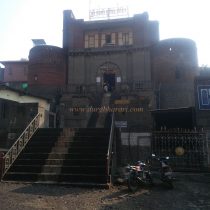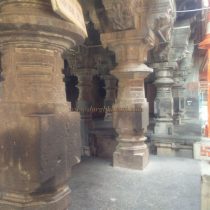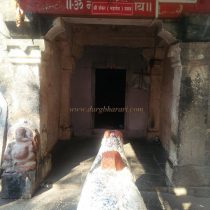NIRA NRUSINHAPUR
TYPR : MEDIEVAL VISHNUMANDIR
DISTRICT : SOLAPUR
Srikshetra Nira Narsinhpur is located at the confluence of the Nira River and Bhīma River at the point where the district boundaries of Pune and Sholapur meet. Shrinarsinh here is the patriarch of many families in Maharashtra, Karnataka and Madhya Pradesh. To reach Srikshetra Narsinhpur, take a bus from Pune to Sholapur and alight at Tebhurni. A bus bound for Akluj from Tembhurni should alight at Sangam Chowk. From here there are rickshaws to Narsinhpur. Or if you are coming from Pandharpur by Akluj route, you can take a bus from Akluj to Tembhurni and get off at Sangam Chowk and take a rickshaw to Narsinhpur. Distance from Pune to Narsinhpur is 185 km. As the construction of the temple is done on a hill on the bank of the river, the temple can be seen from a distance.
...
Located at the confluence of the river, this temple was built during the Peshwa period and is a fine example of medieval architecture. As you climb the steps of the temple, the stone elephants mounted on the steps attract your attention. There is a wide and strong embankment on all four sides of the temple and there is a Nagarkhana built on the front side of the temple and two bastions are built next to it. The inner side of this entire coast is built with stone ramparts. The main temple consists of sanctum sanctorum, assembly hall and entrance hall. The entire structure is made of stone and the ceiling is decorated with carvings and idols of various deities. The stone pillars of the temple are very skillfully made. All these doors are engraved with Jai Vijay and the elegance of Jai Vijay on the brass door is amazing. There are different types of carvings, beautiful pillars, and very beautiful brass door here. The idol of Narsinha is facing west and this idol is made of black stone. The right leg is bent at the knee and the left leg is placed on the thigh, while the right hand is on the right knee and the left hand is on the waist. The face of the idol is wide like a lion, the eyes are big and the face has a fierce expression. The face and body parts are depicted like a lion, but the limbs are human. This statue belongs to the fifth century. The original idol of Narsinha is carved in black stone and coated with a mixture of lime and sand. The temple was renovated by Raghunathrao Vinchurkar in the year 1787 and the related inscription can be seen in the temple. There are temples of Lakshmi, Bhakta Pralhad, Sri Dattatraya, Bhīma Shankar, Vitthal-Rukmini, Shakambari, Kashi Vishweshwar Ganapati, Kalbhairav, and Rameshwar in the premises of the temple. Apart from this, some sculptures and snake sculptures can be seen in the premises of the temple. Raghunathrao Vinchurkar built this Shiv temple in the year 1803 in the memory of Jankibai. A large bell is attached to the west door of the temple and it is said to have been brought from the church by Chimajiappa after his conquest of Vasai in 1739. The Peshwa sent these bells to various shrines. One of them was brought to Nira Narsinhpur by the efforts of Sadashiv Mankeshwar. The construction of ghat at the confluence of the Nira and Bhima rivers was completed in 1527 CE. This construction was done by Trimlapal Dadhji Mudhoji. It took about 3 years to complete this construction. Rooms are available for devotees in Narsinhpur temple but if there is no facility one has to go to Tembhurni.
© Suresh Nimbalkar
















